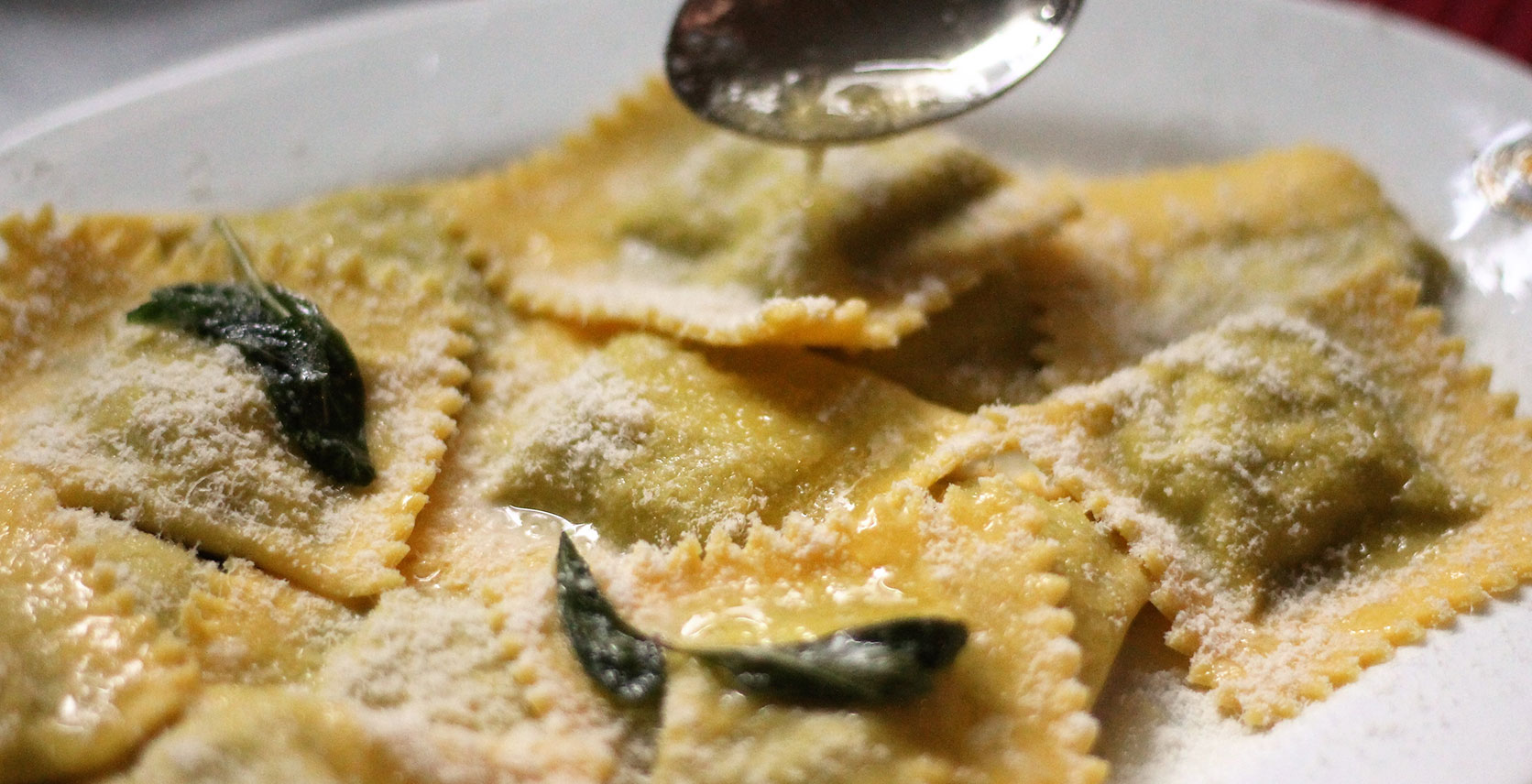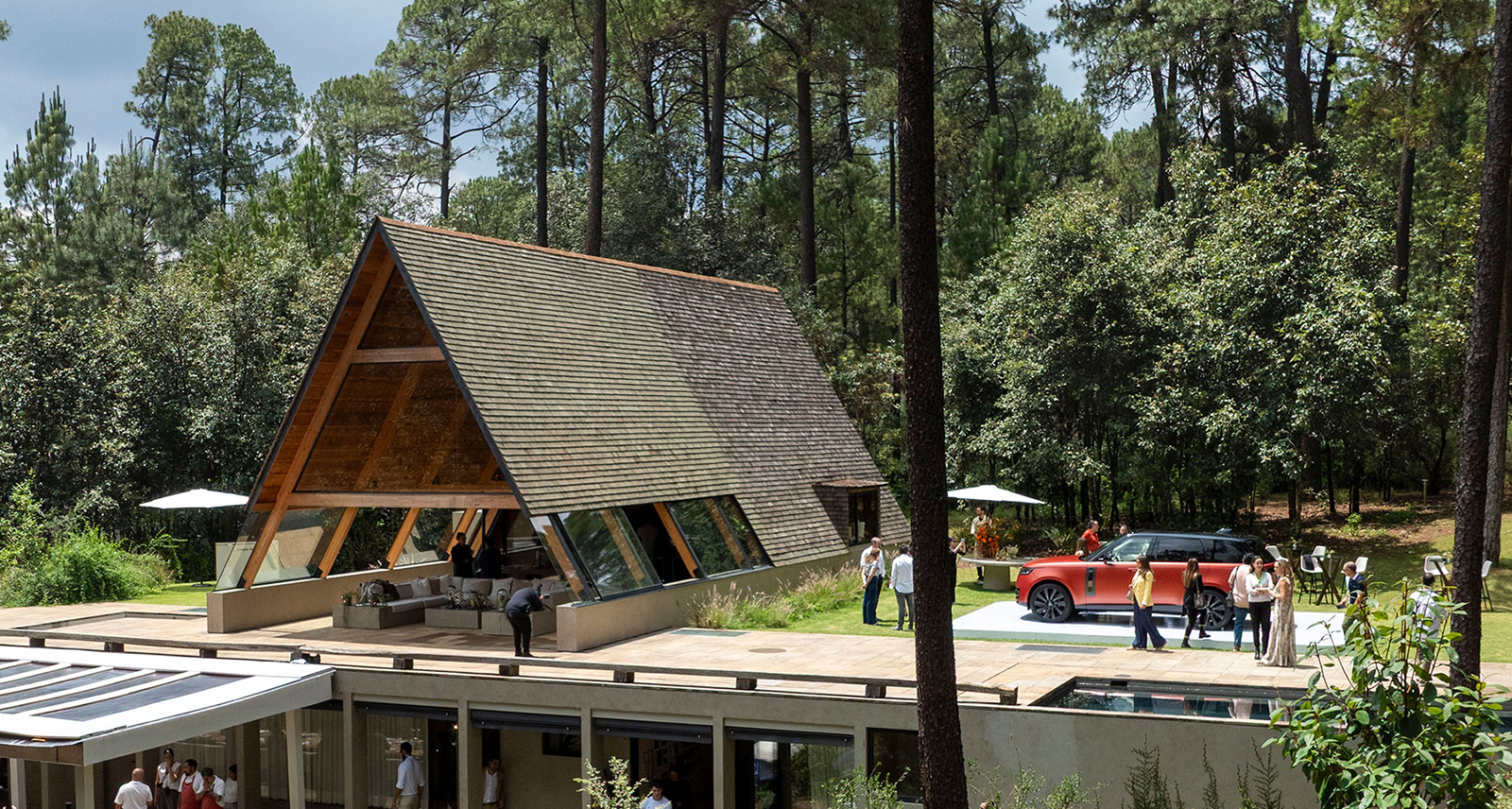This Mysterious Pasta Maker Is Toronto’s Last Great Food Secret
In a city that glorifies chefs at a time when food culture has never been more mainstream — Leandro Baldassarre and his shop, Famiglia Baldassarre, may be the last great food secret. (Until now, anyway.) Baldassarre is a chef-turned-pasta maker, and the man behind your favourite dish at some of Toronto’s top restaurants. But what makes his pasta so much better than the box of Barilla bowties you have in your cupboard?
“I believe in tradition,” he says. “Almost to a fault.” And it’s true. Baldassarre grew up in Woodbridge, Ontario, where his Italian-born grandfathers made their own wine, fire roasted their own peppers, and cured their own meats and his Nonnas’ kitchens were always filled with the aroma of fresh sauces. Leo and his brother were always willing helpers.
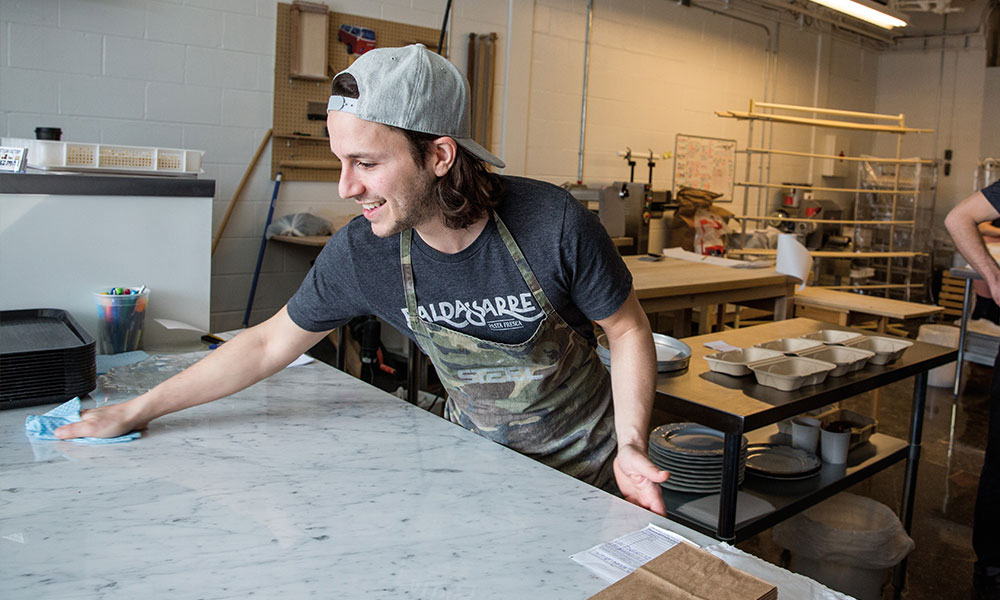
After culinary school, Baldassarre made his way to Italy, where he worked for three years at Dal Pascatore in Mantua — arguably Italy’s best restaurant, known especially for its pasta. It was family owned and family run; the grandmother, Signora Bruna, was in her late 70s and firmly at the helm of the risotto section. “You’d see the family arguing over what bottle of white wine to use for the wild hare ragu,” he says. “Chef Nadia would wait ‘til everyone left, and sneak off to the wine cellar and grab a 200 euro bottle of Barolo, and wink at me as she deglazed the hare.” Whether he knew it at the time or not, this was the beginning of Famiglia Baldassarre.
Back in Toronto, Baldassarre wasn’t pleased with the pasta he was eating. So he rented a basement on College Street and began making fresh pasta the traditional way. “I was so unhappy with the raw product I was getting here,” he says. “The eggs weren’t bright orange like in Italy, so I bought only organic corn fed eggs. The 00 flour everyone was using wasn’t good enough, so I flew back to Italy and talked to the miller who made the flour Dal Pascatore used. He flat out said no, but I wouldn’t take no for an answer. We sat down for an espresso, and chatted.” Three hours later, after Leo poured his heart out, the miller agreed Leo was going to be the only person in North America he would sell his pasta flour to.
Slowly, Leo built up his clientele, and his reputation. He just opened a new store (with the money he’d saved for a down payment on a house). And he even hired a second person to help him; but, just like Dal Pascatore, he wanted to keep it in the family, so he hired his sister in-law.
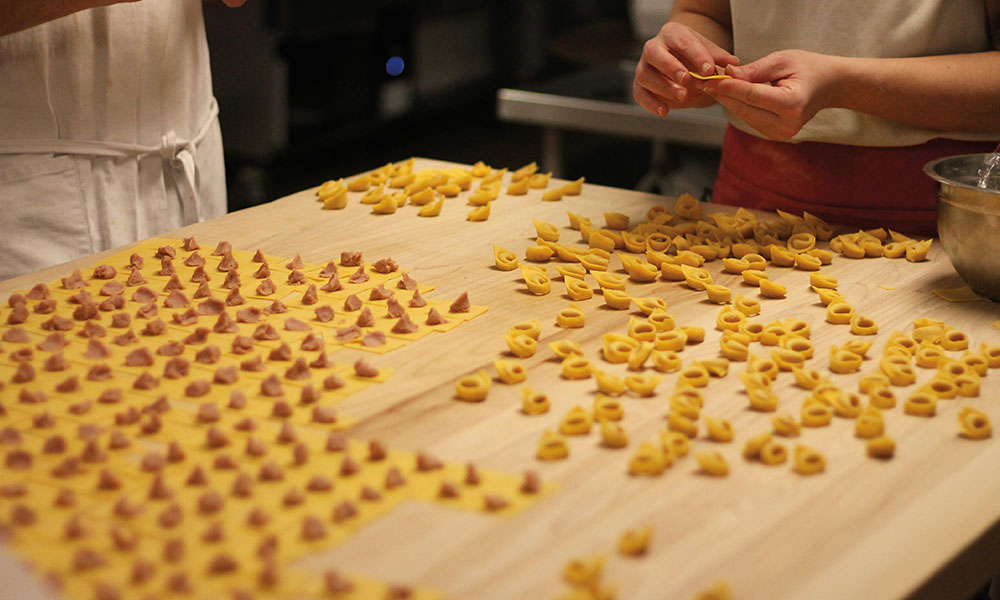
What was the biggest food revelation you had in Italy?
Almost everything I knew about cooking was going to be useless for me. Most chefs are trained in the traditional French brigade system (or, at least used to be). French cuisine is “standardized,” Italian cuisine is regional, sometimes micro-regional. It’s a product of each village, and it’s important to respect that.
How shell-shocked were you when you came back to Canadian kitchens?
It was huge. The thing that hit me right away was the lack of access to the best ingredients. Tomatoes, rice, flour — I’m still looking for better eggs, and it’s been seven years!
Did you think about going back to Italy for good?
It was on my mind a lot at the beginning. I kept asking myself, “What do I need to do to be happy here in Canada?” To stay, and be happy, I needed to experience food like I experienced back in Italy.
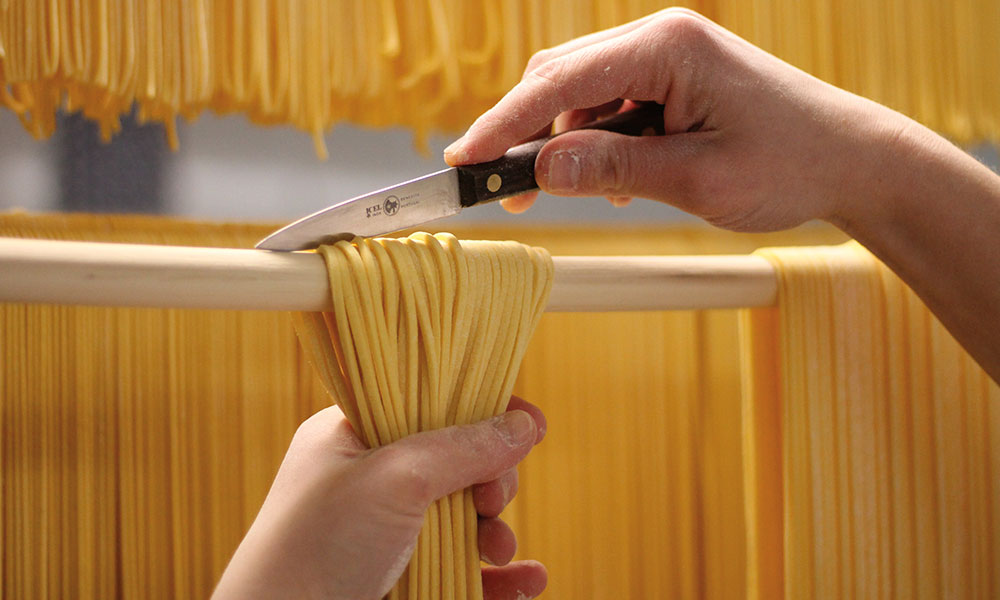
Why did it take so long to get good pasta in Toronto?
It took a long time to get people to appreciate what I was doing, and why it cost what it did. We’ll sell pasta for lunch at the shop sometimes. Usually we do it two ways: with a tomato sauce or with butter and parmesan. And, sadly, 99 per cent of the people want the tomato sauce, because it’s been put into their minds that that’s how you eat pasta. But I think people are coming around. Now, we’ll do up to 70 covers in less than an hour. Victor Barry from Piano Piano and Anthony Walsh of O&B were both recent guest chefs and they cooked for an hour, whatever they wanted to do. We opened the doors, random people walked in off the street, everyone loved it.
What’s your biggest pasta pet peeve?
Can I make a list?
1. Overcooking the pasta. People think they are cooking it “al-dente” (to the tooth), but they’re not.
2. Overdressing the pasta. The noodle is the first thing you should taste, sauce is second.
3. Over-garnishing the pasta. Enough with the micro greens! Less is more.
4. Over complication. I’m a purist, so two or three ingredients is all it takes to make the perfect pasta plate.
5. “Frenchifying” pasta. In Italy, the pasta is the main feature — it stands alone and makes its mark with a strong identity. In French cuisine, it’s one of many ingredients on the entrée, or an appetizer.
6. Bad quality pastas. It’s all commoditized crap made en masse with crap in- gredients. Life’s too short to eat bad pasta!
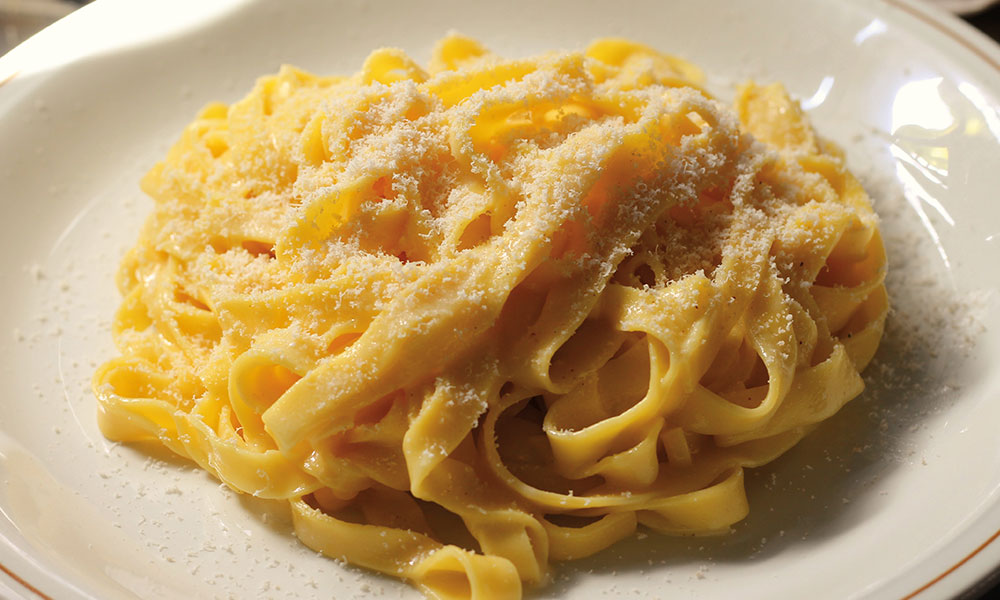
You’ve spent tens of thousands of dollars on these incredible pasta machines from Italy. Why freshly extruded pasta, and not dried?
The reason I decided to go with freshly extruded pasta is mainly because the market is saturated with dried products that cost relatively nothing. I wanted the quality product to set itself apart, with people knowing this was hand made. Un-commoditized, to be more precise. Fresh pasta is born from the traditional Italian home, and that’s what I wanted to bring to this city.
Tommy McHugh is the Executive Chef at STK in Toronto. Look for more of his conversations with culinary legends in this space.
